The Order of the Garter and Queen Elizabeth: part 4
As the official public record since 1665, The Gazette has been recording appointments to the Order of the Garter for over three centuries. The final instalment in our four-part series, British honours expert Russell Malloch looks at the relationship between Queen Elizabeth II and the Most Noble Order of the Garter.
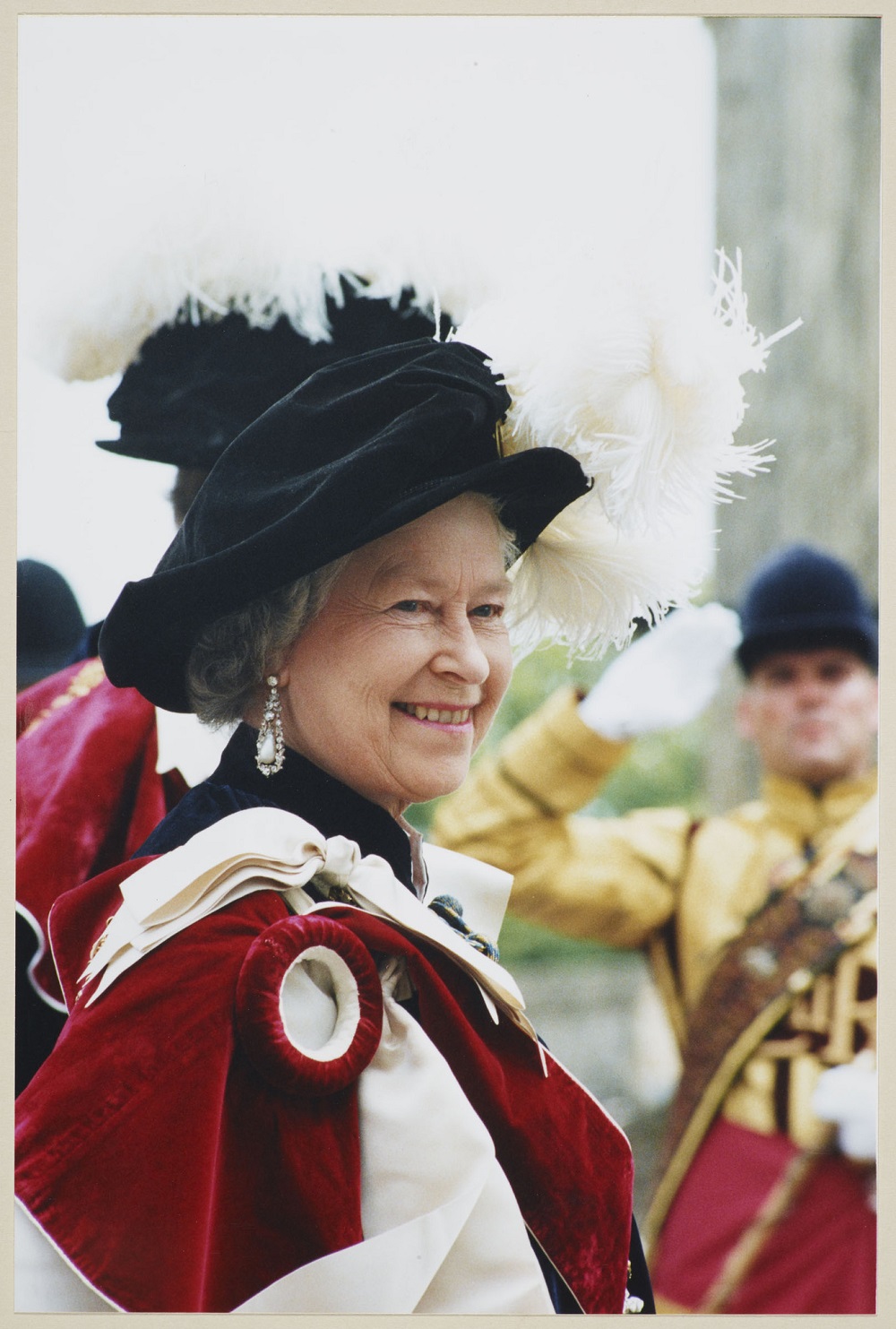
Warrants
The appointment of foreign, royal and ordinary members of the Order of the Garter by Queen Elizabeth II was made by means of a formal warrant, or grant of dignity, of a similar style to the document she received from her father in 1947 when she joined the order.
The Queen signed a series of Garter warrants that were decorated with the royal arms, countersigned by the chancellor, and validated with the order’s seal. The wording of the grant is illustrated by a warrant to the Duke of Devonshire from 1996:
“Elizabeth R
Elizabeth the Second … sovereign of the Most Noble Order of the Garter to our right trusty and right entirely beloved cousin and counsellor Andrew Robert Buxton, Duke of Devonshire, M.C. Greeting!
We the sovereign of the said Most Noble Order of the Garter being desirous of evincing our royal favour by admitting you into the fellowship thereof by virtue of the sovereign power inherent in us do now by these presents nominate and do declare you a knight companion of our Most Noble Order of the Garter, and do hereby give and grant unto you full power and authority to wear the habit and use the insignia and all other ornaments belonging to a knight companion of our said Most Noble Order and to sit in the stall that shall be assigned unto you in our royal chapel of Saint George at Windsor between this time present and the time when you shall be formally invested and installed in as full and ample a manner as if you had already been so invested and installed.
Given at our court at Windsor under our royal sign manual and the great seal of our said Most Noble Order this twenty-third day of April in the year of Our Lord 1996; in the forty-fifth year of our reign.
By the Sovereign’s command
Carrington
Chancellor of the Most Noble Order of the Garter.”
Similar warrants were issued to the nine royal, 15 foreign and 88 ordinary knights and ladies who were nominated by the Queen as sovereign of the order.
To put these numbers into context, in terms of the award of the royal and ordinary honours that lay within the control of the sovereign rather than the prime minister, the Queen approved the appointment of 57 knights and ladies of the Thistle during the same period (1952-2022), as well as admitting 95 members to the Order of Merit, and making more than 6,300 nominations to, or promotions, in the Victorian Order, plus around 2,700 awards of the Victorian Medal. She conferred the Victorian Chain on only 21 royal and ordinary recipients.
The majority of the Garter awards were made on St George’s Day, 23 April, and were notified in The Gazette, but with two important exceptions, as all of the royal and most of the foreign awards were not reported in that way.
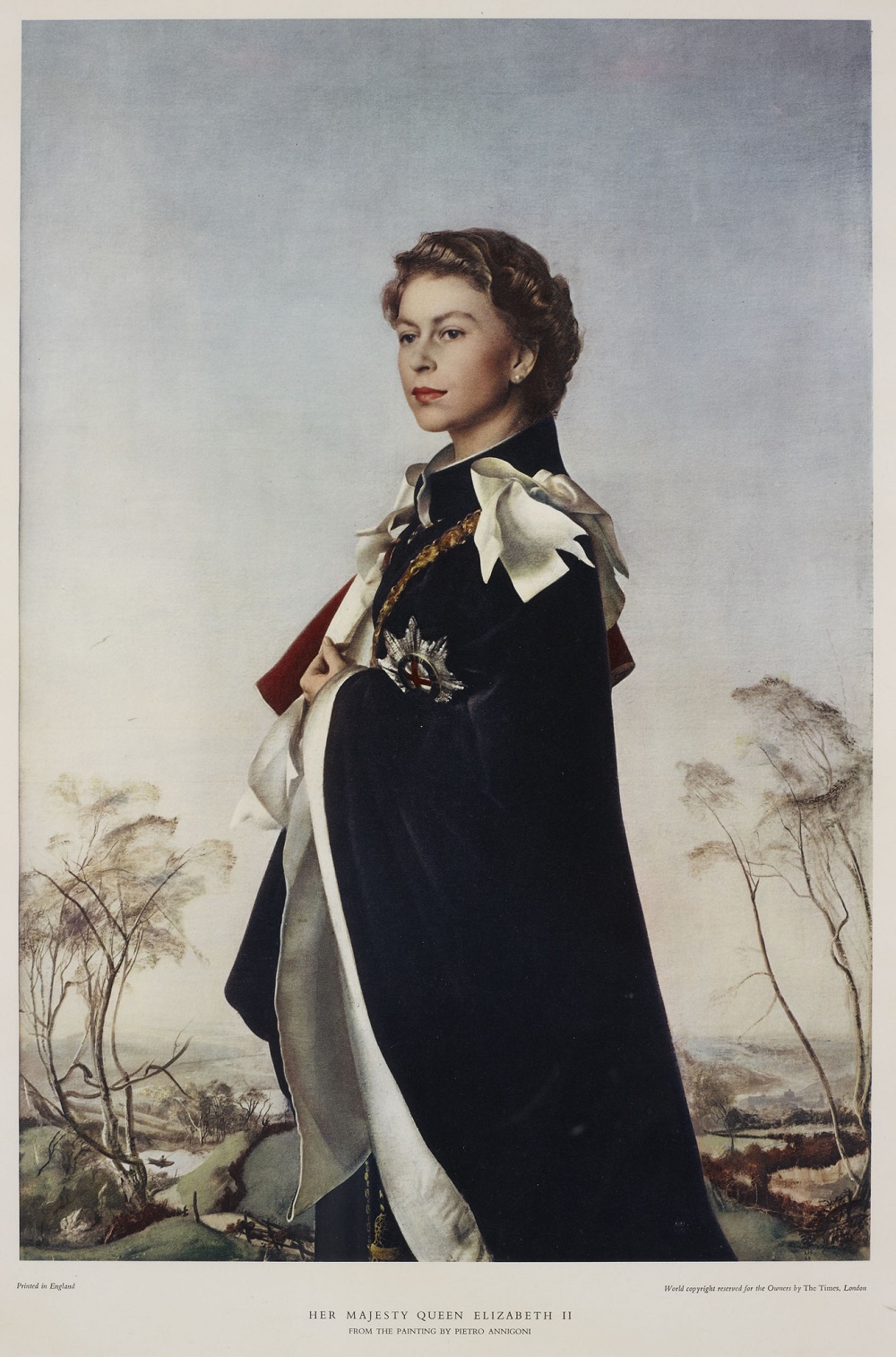
Garter emblems
The Queen’s insignia was of a similar pattern to that of the ordinary members, apart from her mantle, which displayed a Garter star, rather than the usual gartered shield, on the left side. She often wore the blue riband and star on formal occasions such as state visits and when in uniform at her birthday parade, while the collar was worn less frequently, but invariably for the state opening of Parliament.
The order’s emblems appeared in several well-known royal portraits, as in Pietro Annigoni’s fine image of the Queen for the Fishmongers’ Company, and in Harry Eccleston’s design for the notes issued by the Bank of England, including the £5 note from 1971 which combined the Queen in her Garter robes with the Duke of Wellington wearing the order’s riband he gained for fighting Napoleon.
The Garter was also an important element in the work of Dorothy Wilding, whose photographs of the Queen provided the principal image for many of the early postage stamps of the reign, and the basis for the Queen’s miniature in the jewelled badge of her Family Order, which was attached to a yellow riband and worn by a small number of close relatives, as in the case of the three royal ladies of the Garter: the Queen Consort, the Princess Royal and Princess Alexandra.
The Garter’s insignia appeared in various public settings during the reign, as when the garter surrounded the shield in the royal arms that featured on the front page of The London Gazette, where it was first used in 1785 (Gazette issue 12608), or the star that provided the badge of the Coldstream Guards, and was incorporated in the insignia worn by the Military Knights of Windsor, the group of retired officers from the armed forces who played an important role in the life of the order, and led the procession of the companions down to St George’s Chapel on what was known as Garter Day.
Ceremonial
The Garter organised two principal corporate gatherings to welcome new members, while the Queen was involved in two events relating to former members: the return of their insignia, and the memorial service to mark their life and work. A special service was also held during which a deceased companion’s banner was presented in St George’s Chapel.
News about the Queen’s involvement in Garter investitures, installations, next-of-kin audiences and memorial services was usually given in the Court Circular, while The Gazette had not reported the proceedings at any of the order’s installations or investitures since 1805 and 1911 respectively.
As was mentioned earlier, the Queen held two ceremonies at which she handed the insignia to new members, continuing a practice that was introduced by her father after the war, as he held an informal investiture at which the person was presented with part of the insignia, followed by the formal chapter at which they received the complete emblems.
The Queen normally conducted the initial investiture at a private audience at Buckingham Palace, but used Windsor Castle on a few occasions, as happened for prime ministers Churchill and Attlee in the 1950s, and for the final ceremony of the reign in 2022. The royal yacht Britannia was even called into service for this purpose, as when Lord Middleton was invested on board at Kingston-upon-Hull in May 1957, while Lord Ashburton received his insignia at Portsmouth in May 1969. Some of the foreign knights were invested overseas as part of the state visit circuit, with the insignia being carried to locations such as Amsterdam, Madrid and Stockholm.
Before receiving their insignia, male companions received the honour of knighthood if they had not already done so. In May 1970, for example, Cennydd Traherne was not knighted when he received his blue riband at Buckingham Palace, as he had received that honour from the Queen in July 1964 after being made a knight bachelor (Gazette issue 43990). In contrast, Tony Blair had not yet received the accolade, and so he was knighted before being invested in June 2022.
The next step involved a chapter or assembly of the members of the order, which was usually held a few weeks or months after the initial investiture, although in a small number of cases there was a longer delay, as happened with Anthony Eden who was knighted in October 1954 but did not attend his chapter until June 1956.
The chapter was always supervised by the Queen, and attended by between 19 and 28 of the existing knights and ladies, including the Queen Mother who was 100 years old when she saw Field-Marshal Lord Inge and Sir Anthony Acland being invested in June 2001, while the Duke of Edinburgh witnessed his last Garter chapter in June 2016 when the insignia was given to Lord Shuttleworth and Sir David Brewer, the lords lieutenant of Lancashire and Greater London.
The presentation of the full insignia was routinely completed on Garter Day in June and preceded by a rehearsal. Sir Edward Heath’s investiture in 1992 was recorded as part of a documentary to mark the 40th anniversary of the Queen’s accession, and provided a rare glimpse of this private ceremony.
The chapter called on the services of the order’s officers, of whom there were six:
- prelate
- chancellor
- king of arms
- register
- usher
- secretary
By the start of the Queen’s reign the place of prelate was held by the bishop of Winchester, just as it had been since the 14th century; the chancellor’s position was filled by one of the knights; the king of arms was the senior heraldic authority in England; the register was the dean of Windsor; the usher of the black rod was a senior officer from the armed forces; and the post of secretary was vacant, but would soon be filled by a member of the College of Arms.
The prelate and register were responsible for reading the admonitions that were contained in the Garter’s statutes and had to be delivered to a companion as they put on their insignia. When the Duchess of Norfolk was invested as the first ordinary lady in June 1990 the prelate spoke first, as the Queen buckled the garter on the duchess’s left arm:
“To the honour of God omnipotent, and in memorial of the blessed martyr, Saint George, wear for thy renown this most noble garter the symbol of the most illustrious order never to be forgotten or laid aside, that hereby thou mayest be admonished to be courageous, and having undertaken a just war, into which thou shalt be engaged, thou mayest stand firm, valiantly fight, courageously and successfully conquer.”
The riband and star were delivered next, when the register said:
“Wear this riband, adorned with the image of the blessed martyr and soldier of Christ, Saint George, by whose imitation provoked, thou mayest so overpass both prosperous and adverse encounters, that having stoutly vanquished thine enemies, both of body and soul, thou mayest not only receive the praise of this transient combat, but be crowned with the palm of eternal victory.”
Upon putting on the mantle, the prelate pronounced:
“Receive this robe of heavenly colour, the livery of this most excellent order, in augmentation of thine honour, ennobled with the shield and red cross of our Lord, by whose power thou mayest safely pierce troops of thine enemies, and be over them ever victorious, and being in this temporal warfare glorious, in egregious and heroic actions, thou mayest obtain eternal and triumphant joy.”
Finally, on having the collar placed over her shoulders, the register said to the duchess: “Wear this collar about thy neck, adorned with the image of the blessed martyr and soldier of Christ, Saint George, by whose imitation provoked”, followed by the same wording as for the riband about vanquishing enemies and the palm of eternal victory.
The register then administered the oath to the newly invested companions (the duchess was joined on this occasion by the Duke of Wellington and Field-Marshal Lord Bramall):
“You being chosen to be one of the honourable company of the Most Noble Order of the Garter, shall promise and swear, by the holy evangelists, by you here touched, that wittingly or willingly you shall not break any statutes of the said order, or any article in them contained (except in such from which you have received a dispensation from the sovereign), the same being agreeable, and not repugnant to the laws of almighty God, and the laws of this realm, as farforth as to you belongeth and appertaineth, so God help you, and his holy word”.
The register combined his Garter duties with those of dean of Windsor, and so formed a direct and personal link with the sovereign, which was evident in the case of David Conner, who wore the register’s badge when he conducted the final committal service for Queen Elizabeth in St George’s Chapel on 19 September 2022.
When the Queen came to the throne the combined offices of dean and register were held by Eric Hamilton, and she presented the register’s badge (showing a book with crossed pens within a crowned garter) to Hamilton’s successor, Robert Woods, the archdeacon of Sheffield, before attending his installation service in St George’s in December 1962.
The Queen attended the installation service for Woods’s successors and performed that task for the last time after she handed the register’s badge to David Conner, formerly bishop of Lynn, at Buckingham Palace in October 1998.
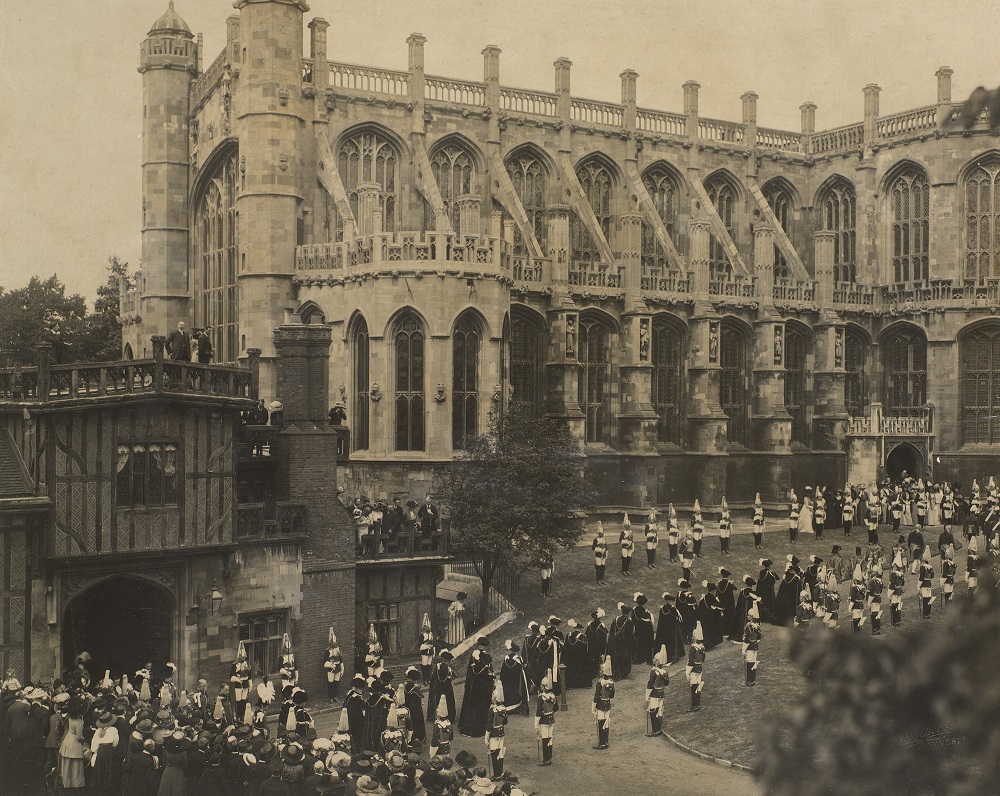
Installation
The June chapter was followed by a luncheon party for the companions and their partners, together with the officers and some guests, and in the afternoon the knights and ladies formed a public procession that was led by the constable and governor of Windsor Castle and the Military Knights of Windsor, which travelled down from the castle to the chapel for the installation service.
All of the ordinary members of the Queen’s reign were installed, with the exception of Lord Granville who died a few months after he joined the order in 1952, while some but not all of the foreign members were installed, following a precedent that was set by King George VI in 1951 during the state visit of the King of Denmark.
The Garter’s procedure was illustrated by the ceremony in June 1990, when the Queen said, “It is our pleasure that Her Majesty the Queen of the Netherlands be installed”, after which the king of arms and usher conducted the Dutch sovereign to her stall. The Queen then said, “It is our pleasure that the companions newly invested be installed” and the chancellor began by calling the name of the Duchess of Norfolk, who was taken to her stall by the king of arms, followed by the Duke of Wellington and Lord Bramall.
The Queen presided over more than 40 services since she installed Sir Winston Churchill in 1954. During the last decade of her reign she conducted no fewer than 11 installations, including those for the Duke of York and the Earl of Wessex in 2006, and the final service on Garter Day of 2022 when she installed the Duchess of Cornwall (now Queen Consort), Lady Amos and Sir Tony Blair.
The Garter’s ceremonial ran smoothly in most years, although the 1955 service was cancelled due to a rail strike, and the 1959 installation was postponed because the Queen was about to set off for Canada, while Garter Day in 1961 “was unenviably notable in that the rains descended and the floods came, to the disappointment and discomfort of many” (The Society of Friends of St George’s and the Descendants of the Knights of the Garter, 1961, p45)1, and so the procession was cancelled and the members were obliged to travel to the chapel by car.
More recently Garter Day was cancelled to take account of the general election that was to be held on 8 June 2017, and most of the order’s activities were suspended during 2020 and 2021 because of the coronavirus situation.

Other services
The Queen attended a general thanksgiving service and entertained the companions at Windsor Castle on Garter Day in June in those years when there was no need for a chapter or installation because no members had been appointed since the order last gathered.
She also took part in events that recalled her family’s many connections with the Garter. One of the earliest was in October 1955 when she unveiled the national memorial to King George VI in the Mall, close to St James’s Palace in London. The statue showed her father in his Garter mantle and was by William McMillan, the sculptor who designed the British War and Victory Medals that were issued to the late King and all of those who served in the first war.
20 years later the Queen attended a service to mark the 500th anniversary of the construction of the new St George’s chapel by Edward IV during the 15th century, and she returned to the Mall in February 2009 to unveil a statute of her mother, who was also shown wearing her Garter robes.
The companions entertained the Queen and her husband at Spencer House in London in June 1997 to mark their golden wedding anniversary, while several knights attended a reception at Spink of London to mark the publication of a history of the order, which included a forward by the Duke of Edinburgh who wrote: “Many things have changed during that long spell of years, but the concept of a like-minded brotherhood dedicated to service and chivalry has survived intact. There may be differences of emphasis and differences of perception, but the core principle remains as relevant as ever.”
No special service was organised to celebrate the order’s 650th anniversary, although a series of postage stamps were issued in February 1998 to commemorate the occasion. The designs had little to do with the Garter, but rather displayed the Queen’s Beasts, a series of heraldic statues that referred to the sovereign’s ancestry and stood at the entrance to Westminster Abbey during the 1953 coronation, including a griffin that represented the founder of the order, Edward III.
One notable event in the order’s modern annals took place at Windsor Castle on 17 June 2002 on the occasion of the Queen’s golden jubilee, when the royal and ordinary knights and ladies were joined by the Queens of Denmark and the Netherlands, the Kings of Spain and Norway and the Grand Duke of Luxembourg in their Garter robes.
More recently, a service in April 2008 was organised to commemorate the 660th anniversary of the founding of the Garter and the College of St George, as well as the 60th anniversary of the re-introduction of the ceremony of installation by the Queen’s father.
Heraldic record
The heraldic privileges associated with membership of the Garter were maintained by the Queen, and so the companions continued to place a representation of the garter and/or the collar around the shield bearing their coat of arms. They could also set a banner and crest above their stall in St George’s Chapel and attach a metal plate bearing their name and arms to the back of the stall.
The banner and crest were removed after the member’s death, and a number were later displayed at various locations around the country, as happened with the banners of two knights who died in 1995, with Cennydd Traherne’s flag being placed in Llandaff Cathedral, while Harold Wilson’s heraldry later decorated the chapel of Jesus College, Oxford.
The stall plates remain as a permanent memorial to deceased companions and add to a heraldic record that extends back to the late 14th century and has been described as the finest armorial in the world. The position of the hundreds of plates within the stalls in the chapel bears little relation to the sequence of the knights, and plates were not always set in the same stall as the banner. The heraldic record is both partial and confusing, largely because of different practices and re-arrangements that took place before the Queen came to the throne, and so some stalls have more than 25 plates and are full, while others have less than ten.
A few stalls contain plates for knights whose membership overlapped, as with the memorials for political opponents Harold Wilson and Edward Heath, who were both companions between 1992 and 1995. The Queen avoided any of the more radical proposals to unravel and reform the heraldic record and so, as one historian has written, “provision for the longer term must give cause for concern.” (Begent & Chesshyre, 1999, p188)2

Return of insignia
The Queen observed the long-standing practice of receiving the relative of a deceased knight to return their Garter insignia. In most cases this was done by the son of the late companion, while a few daughters were invited to do so, as in December 1981 when the Countess Mountbatten of Burma returned her father’s blue riband.
The Queen’s first audience of this kind took place at Clarence House in London on 26 March 1952 when she received the insignia worn by two former knights, the Marquess of Linlithgow, the viceroy of India, and Viscount Addison, the leader of the House of Lords and the first of the “King’s Own” knights of 1946.
In February 1996 the audiences were widened to include the widow of deceased knights, when Lady Wilson of Riveaulx was invited to Buckingham Palace to return the insignia worn by her late husband Harold Wilson.
The next-of-kin ceremony was usually limited to members of the three senior orders, and so the Marquess of Linlithgow also returned his father’s Thistle insignia when he delivered up the Garter in March 1952, while the last time the Order of St Patrick’s insignia was delivered by the relative of one of the non-royal knights was in April 1961 when the Earl of Shaftesbury returned his grandfather’s riband at Buckingham Palace. The Queen later extended the personal audience to include the relatives of members of the Order of Merit, having made provision in April 1991 that now required the badge to be returned to the sovereign.
Memorial services
The death of a companion was usually marked by a funeral or memorial service at which the Queen was represented by one of the knights of the Garter, unless she attended in person, for example in the case of royal companions such as the Earl of Athlone in January 1957, and the Duke of Windsor in June 1972, or as happened with the thanksgiving service for Sir Edmund Hillary in St George’s Chapel in April 2008.
A number of prime ministers acted on the Queen’s behalf, as Clement Attlee attended the memorial service for Earl Alexander of Hillsborough at St Martin in the Fields in February 1965, while John Major represented her at the service for Lord Ashburton at Winchester Cathedral in October 2021. Sometimes a senior member of the royal family acted, as when the Duke of Kent attended the Westminster Abbey service in November 1967 for Lord Attlee, who wrote a limerick that referred to his knighthood of the Garter and other honours:
‘Few thought he was even a starter
There were many who thought themselves smarter
But he ended PM, CH and OM
An earl and a knight of the Garter.’
King Charles also performed this duty while he was Prince of Wales, for example when he attended the thanksgiving services in Westminster Abbey for Harold Wilson in July 1995, and Mary Soames in November 2014.
The last legacy act of the Queen’s reign took place on 19 July 2022, when she received Jennifer Acland to deliver up her husband’s Garter insignia, having already been represented by the Duke of Abercorn, the chancellor of the order, at the thanksgiving service for the life of Sir Antony Acland that was held at Eton College Chapel in February 2022.
One of the earliest acts of King Charles’s reign involved the Garter, as his first nominee as sovereign was the Duke of Kent who represented him at the thanksgiving service for Lord Sainsbury of Preston Candover, by then the senior ordinary companion, which took place at St Martin in the Fields in London on 21 September 2022.
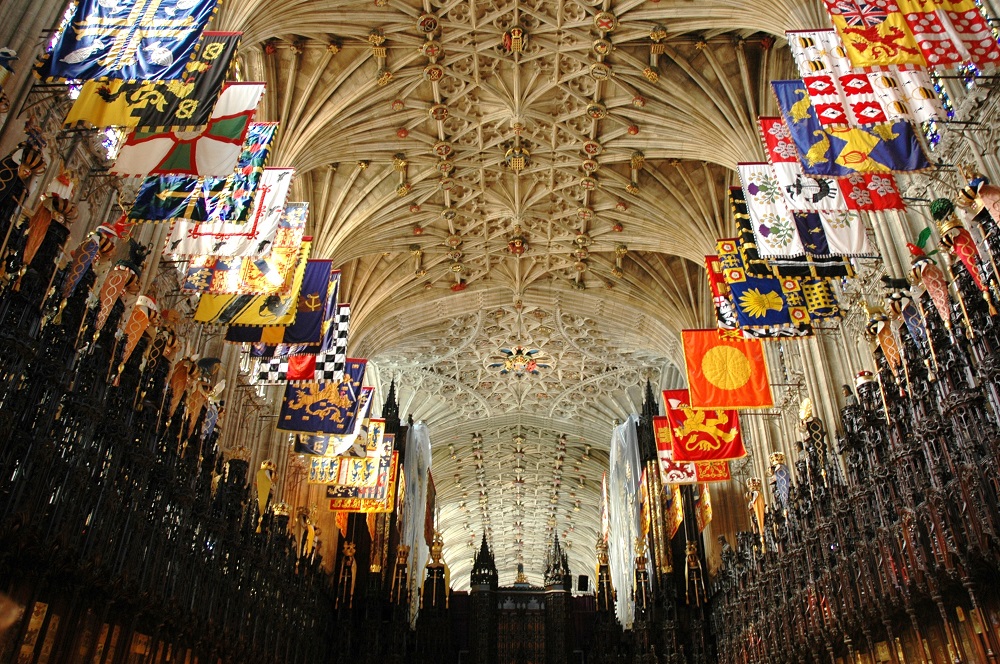
Banners offered
One of the final marks of respect to be given to former members of the order was a memorial evensong in St George’s Chapel, which was combined with the laying up of their banner on the high altar.
The ceremony of honouring the banner of departed companions was reported in Gazettes of the 18th century, but the event was not noticed after 1805 when the banners of several knights were presented before the installation that was held on St George’s Day.
During the Queen’s reign the banner was often presented as part of a separate service, rather than at the member’s funeral or public thanksgiving. This happened in 1965, for example, when Winston Churchill’s state funeral in St Paul’s Cathedral on 30 January was followed by a more intimate service for the laying up of his Garter banner at Windsor on 5 April, in a ceremony attended by several of the knights, including wartime colleagues such as Lords Alexander, Ismay and Portal.
Two years later a similar procedure was adopted for Clement Attlee, as his memorial service in Westminster Abbey on 7 November 1967 was followed by the presentation of his banner in St George’s on 12 November. The banner was later given to Haileybury College and showed the winged hearts from the college’s coat of arms that were incorporated in the prime minister’s heraldic display as a reminder of his old school.
The presentation of Garter banners extended to the foreign companions, including ceremonies for Princess Wilhelmina of the Netherlands in December 1962, and the Emperor of Ethiopia in October 1975. The service for the King of Norway in May 1991 was typical and began with a memorial evensong conducted by the register of the Garter, who then received the banner from the Military Knights of Windsor and laid it on the high altar. The service concluded with a prayer for King Olav and all the other companions of the order “who have left us the fair pattern of valiant and true knighthood” and ended by asking God to save “our gracious sovereign, and all the companions, living and departed, of the most honourable and noble Order of the Garter.”
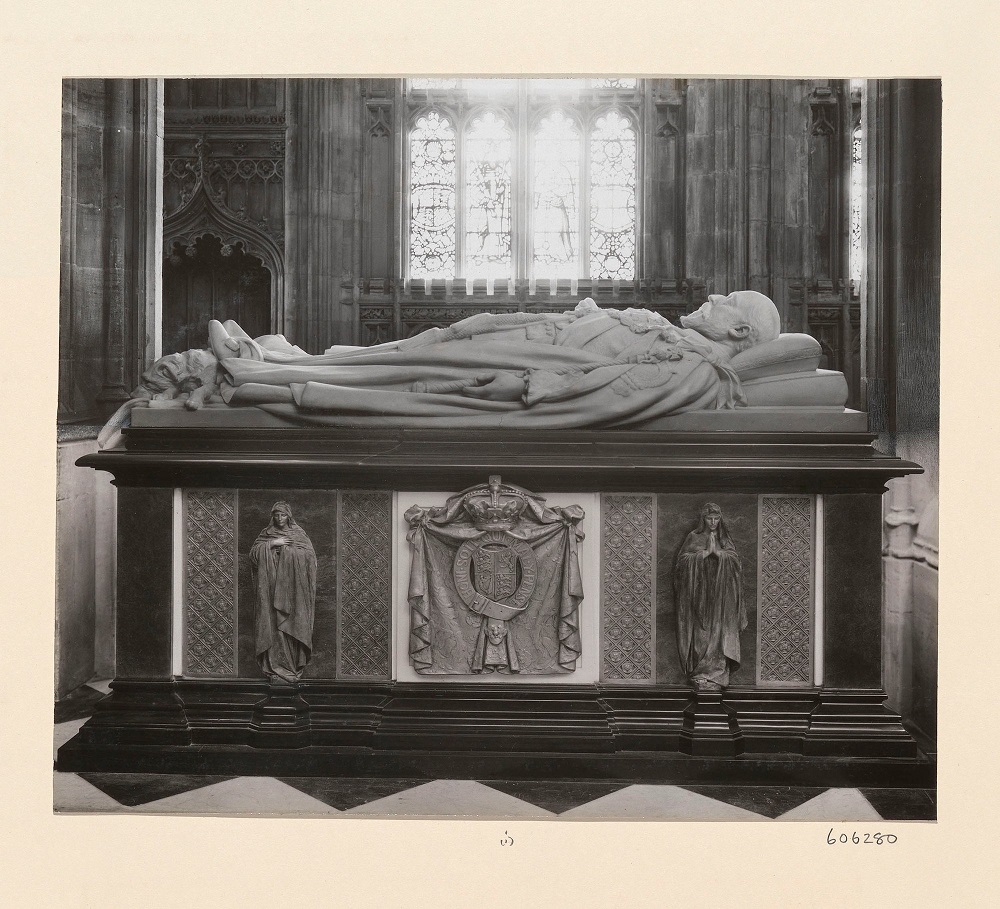
The Queen’s legacy
The Garter played an important role at the close of Queen Elizabeth’s reign, as her coffin was taken to St George’s Chapel, where the king of arms followed the customary formula and proclaimed the late Queen’s style and titles, ending with the words “sovereign of the Most Noble Order of the Garter”.
The Queen’s remains were laid to rest in the shadow of the Garter banners, and close to memorials to many of her ancestors, including the tomb of King Edward VII in his Garter robes that provides a reminder of the Paddington Bear phenomenon that emerged after the Queen’s death.
An image of Edward’s favourite dog Caesar was carved on the tomb, where he was shown lying at the King’s feet. The terrier was the subject of comment in May 1910 when he walked in the funeral procession after his master’s coffin, and before the German Emperor and what the King’s biographer described as “a cavalcade such as rarely if ever had been seen before or since in the history of the world.” (Lee, 1927, p722)3
A similar tomb was placed in St George’s that showed King George and Queen Mary in their Garter robes, but with a more conventional lion and unicorn being placed at their feet, and in 1983 the Garter banners of Queens Alexandra and Mary were returned to the chapel, having previously been housed in the College of Arms and at Arundel Castle.
The Queen’s father was buried at Windsor in the King George VI Memorial Chapel, which was the first addition to be made to the structure of St George’s since the start of the 16th century. The new building contained a bronze relief of the King in his Garter robes and was based on an image from a memorial in St Mary Magdalene Church at Sandringham. The present King, then Prince of Wales, and many other members of the order were present on 31 March 1969 when the dean of Windsor conducted the service of dedicating the chapel to his grandfather.
The Queen was buried in this chapel beside her parents and husband. The stone on the floor of the memorial chapel now bears the simple inscription George VI 1895-1952. Elizabeth 1900-2002, and below that the image of a Garter star and Elizabeth II 1926-2022. Philip 1921-2021.
The entrance to the memorial chapel contains two panels. One provides details about King George VI’s life, while the other gives an extract from his 1939 Christmas broadcast in which, during the early months of the war, he warned his listeners of the dark times that lay ahead, and said he thought they may take encouragement from the lines that are inscribed close to where Queen Elizabeth II now lies:
‘I said to the man who stood at the gate of the year, “Give me a light that I may tread safely into the unknown” and he replied, “Go out into the darkness, and put your hand into the hand of God; that shall be to you better than a light, and safer than a known way”.’
About the author
Russell Malloch is a member of the Orders and Medals Research Society and an authority on British honours.
See also
Queen Elizabeth II - In Memoriam
Images
Royal Collection Trust / © His Majesty King Charles III 2022
Royal Collection Trust / © His Majesty King Charles III 2022
Royal Collection Trust / © His Majesty King Charles III 2022
Royal Collection Trust / © His Majesty King Charles III 2022
Royal Collection Trust / © His Majesty King Charles III 2022
Josep Renalias
Royal Collection Trust / © His Majesty King Charles III 2022
References
- The Society of Friends of St George’s and the Descendants of the Knights of the Garter, Annual Report (1961), page 45.
- Peter Begent and Hubert Chesshyre, The Most Noble Order of the Garter 650 Years (1999), page 188.
- Sir Sidney Lee, King Edward VII, Volume II (1927), page 722.
Publication date: 23 November 2022
Any opinion expressed in this article is that of the author and the author alone, and does not necessarily represent that of The Gazette.
